A Sweet Proposition
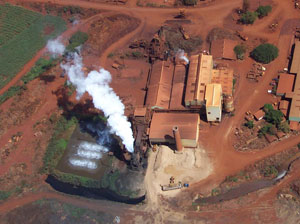
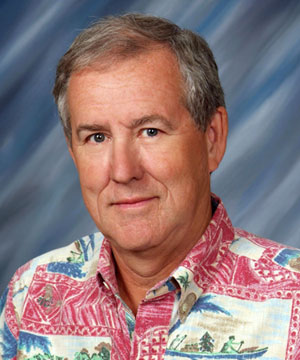
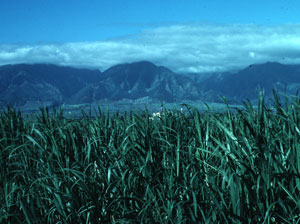
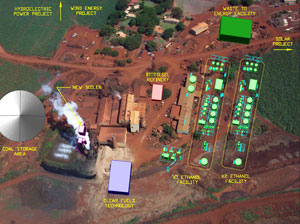
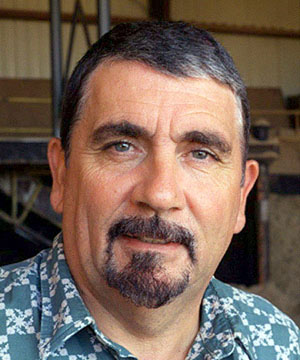

October 3, 2007
BY Bryan Sims
When Alan Kennett arrived on the Hawaiian Islands in 1976 there were 18 sugar factories in operation. Today, there are only two: Gay & Robinson Inc. (G&R) and Hawaii Commercial & Sugar Co. (HC&S).
"The reason there are only two of us left is because inflation ate all the others up," says Kennett, who became G&R president in 1994, the company's 102nd year of operation. Today, Kennett and G&R are on the verge of building Hawaii's first ethanol plant; a dramatic transformation in identity for the company, and a possible boon for Hawaiians, who import about 96 percent of their energy.
In July, G&R, Hawaii's second-largest and second-oldest sugar producer, and Vancouver, British Columbia-based ethanol producer and marketer Pacific West Energy LLC announced a partnership, Gay & Robinson Ag-Energy LLC, to develop an ethanol plant. The plant will be in the heart of G&R's sugar fields on the west side of Kauai, Hawaii. The ethanol plant is designed to produce 12 MMgy, which would meet 25 percent of the state's current needs for the fuel. The $29 million ethanol project will use sugar juice and molasses as primary feedstocks.
In addition to the ethanol project, developers are exploring other alternative energy systems, including biomass gasification, biomass-to-liquid, methane recovery, lignocellulosic ethanol, biodiesel production, hydropower and a solar energy project. "As you can see, we're looking at becoming an energy farm," Kennett says. "Sugarcane is a great energy crop, and we're looking at capturing all of the energy associated with sugarcane as well as recovering the energy that was formerly lost in these processes."
According to Pacific West President William Maloney, his company has been trying to develop an ethanol footprint on Maui since 1997 with ED&F Man Alcohols. Kennett suggested working with Pacific West to develop the current ethanol project so "it's moved to the top of the two companies' list," according to Maloney. "The first steps are to solidify the business that's there today, which is to make it as efficient as possible, bring in new equipment for the agricultural side, expand the sugarcane and the cultivation and just get our feet off the ground," Maloney says. "It went from a stand-alone molasses-based facility on Maui [Pacific West's original solo project] to this intricately integrated project on Kauai."
G&R Ag-Energy has secured a state air permit and initiated design and engineering work from process technology provider Praj Industries Ltd., which is slated to begin construction later this year with ethanol production expected in the spring of 2009. According to Kennett, the plant's sugarcane supply will come directly from its 7,500-acre sugarcane land.
Kennett says the transformation to an energy farm is vital to the company's survival in terms of commodity balance, as G&R has been getting the same amount for its sugar—around 18 cents per pound—since the 1985 Farm Bill. A new Farm Bill is up for renewal with forecasts of a half-cent per pound increase and another 2.5-cent increase at the end of the five years. Kennett says he can't wait for the price increase and, in the interim, he's focused on a new avenue of interest: renewable energy production. "You can see we still are looking at a price that's not really helping us because we're losing money in sugar," Kennett says. "We made a decision to transform ourselves from being a sugar company into an energy company and we felt that we would have a much better chance at succeeding by growing sugar as an energy crop than as a food crop."
HC&S, Hawaii's oldest and largest sugar operator on the northwest tip of Maui, is also exploring ethanol. The 200-year-old company accounts for more than 60 percent of Hawaii's sugar production. HC&S President Steve Holaday notes that his company is merely analyzing ethanol's feasibility. "Our strategy going forward is to produce about half food-grade sugar that has a lot higher margins, obviously, than commodity sugars," Holaday says. HC&S has a 37,000-acre sugarcane plantation and produces more than 200,000 tons of raw sugar annually. "We're in the process of doing the engineering and evaluation on an 18 MMgy to 20 MMgy ethanol plant," Holaday says. "I think it will be at the end of the year before we have a go or no-go decision on something like that."
While both sugar producers are taking a proactive approach for stimulating economic growth, natural impediments lie in the wake of this progression—something both companies have taken into serious account.
Overcoming Obstacles
Perhaps the most inherent challenges stalling Hawaii's pursuit of a viable ethanol future are availability of water, feasibility of distribution, and a volatile gasoline and ethanol market.
G&R uses an average of 80 million gallons of water per day for its sugar production, much of which flows from Kauai's mountains in canals and ditches. During sugar's heyday, irrigation systems were common throughout the islands. As sugar companies began closing 20 years ago, landowners let their systems deteriorate or be diverted for other, more immediate needs. "Where we are located, we have our own captive water source," Maloney says. "We're the 'low hanging fruit,' but other areas of Kauai are rain-fed so they can grow cane at a low cost. They just don't get the viable yield we get because we're drip-irrigated. On other developing islands that are not currently producing sugar, there are issues of where to pull the water from and I think that's going to be a real challenge particularly for sugarcane-to-ethanol."
Hawaii has two oil refineries operated by Chevron and Tesoro on the island of Oahu. Their primary market is jet fuel for the military and the tourism industry. Since Hawaii doesn't have the benefit of rail, truck or barge, the two companies are faced with distribution challenges when it comes to ethanol. Moving the denatured ethanol in a bulk basis from the outside islands to Honolulu is problematic because the harbors are congested and oil companies like Chevron and Tesoro own the pipelines, Holaday says. "In my opinion, not only do you have to look at the feasibility of making ethanol from sugar at a reasonable price, but the distribution challenges will be harder for us than most people think," he says.
Among other challenges would be conservative land owners, the scarce availability of labor and the small market size that makes it difficult to scale-up projects. "The state has tried to ameliorate the negatives, but there are still more challenges," Maloney says. "I'd say the biggest challenge is the fluctuation in ethanol prices. I'd say right now that's probably one of the biggest impediments in shifting from one commodity to another."
According to Charles Kinoshita, associate dean of the College of Tropical Agriculture and Human Resources at the University of Hawaii, the economic shift from sugar input to ethanol input shouldn't be too drastic. Hawaii currently imports 450 MMgy of regular gasoline at a cost of more than $1 billion per year. "It really does depend on what happens to the price of gasoline," Kinoshita says. "I think if we see either stable or increasing prices for crude oil then it's very likely there will continue to be not only interest, but significant movement in producing more biofuels in the state."
A Bright Future
Hawaii has enacted renewable energy incentives to encourage and support local production with the goal to decrease the islands' dependence on imported foreign energy. Would-be ethanol producers are eligible to receive a tax credit worth 30 cents per gallon with a maximum credit on an initial nameplate capacity of 15 MMgy for eight years. "If you keep your capital cost down it could cover all of the capital cost of the ethanol plant," Maloney says.
In April 2006, Hawaii enacted a state ethanol blending mandate requiring that 85 percent of gasoline contain at least 10 percent ethanol. Because there is no current ethanol production in Hawaii, the mandate has been filled with imported ethanol, causing oil companies to import more than 55 million gallons of ethanol. In June, Gov. Linda Lingle signed legislation to restore a general excise tax exemption.
"When there is an energy crisis we feel it the most because of our location and we feel the most vulnerable [as a result]," Kennet says. "That's why there is this big push in Hawaii to make ourselves more energy independent, and that's why the state is coming up with these attractive tax incentives."
Bryan Sims is an Ethanol Producer Magazine staff writer. Reach him at bsims@bbibiofuels.com or (701) 746-8385.
"The reason there are only two of us left is because inflation ate all the others up," says Kennett, who became G&R president in 1994, the company's 102nd year of operation. Today, Kennett and G&R are on the verge of building Hawaii's first ethanol plant; a dramatic transformation in identity for the company, and a possible boon for Hawaiians, who import about 96 percent of their energy.
In July, G&R, Hawaii's second-largest and second-oldest sugar producer, and Vancouver, British Columbia-based ethanol producer and marketer Pacific West Energy LLC announced a partnership, Gay & Robinson Ag-Energy LLC, to develop an ethanol plant. The plant will be in the heart of G&R's sugar fields on the west side of Kauai, Hawaii. The ethanol plant is designed to produce 12 MMgy, which would meet 25 percent of the state's current needs for the fuel. The $29 million ethanol project will use sugar juice and molasses as primary feedstocks.
In addition to the ethanol project, developers are exploring other alternative energy systems, including biomass gasification, biomass-to-liquid, methane recovery, lignocellulosic ethanol, biodiesel production, hydropower and a solar energy project. "As you can see, we're looking at becoming an energy farm," Kennett says. "Sugarcane is a great energy crop, and we're looking at capturing all of the energy associated with sugarcane as well as recovering the energy that was formerly lost in these processes."
According to Pacific West President William Maloney, his company has been trying to develop an ethanol footprint on Maui since 1997 with ED&F Man Alcohols. Kennett suggested working with Pacific West to develop the current ethanol project so "it's moved to the top of the two companies' list," according to Maloney. "The first steps are to solidify the business that's there today, which is to make it as efficient as possible, bring in new equipment for the agricultural side, expand the sugarcane and the cultivation and just get our feet off the ground," Maloney says. "It went from a stand-alone molasses-based facility on Maui [Pacific West's original solo project] to this intricately integrated project on Kauai."
G&R Ag-Energy has secured a state air permit and initiated design and engineering work from process technology provider Praj Industries Ltd., which is slated to begin construction later this year with ethanol production expected in the spring of 2009. According to Kennett, the plant's sugarcane supply will come directly from its 7,500-acre sugarcane land.
Kennett says the transformation to an energy farm is vital to the company's survival in terms of commodity balance, as G&R has been getting the same amount for its sugar—around 18 cents per pound—since the 1985 Farm Bill. A new Farm Bill is up for renewal with forecasts of a half-cent per pound increase and another 2.5-cent increase at the end of the five years. Kennett says he can't wait for the price increase and, in the interim, he's focused on a new avenue of interest: renewable energy production. "You can see we still are looking at a price that's not really helping us because we're losing money in sugar," Kennett says. "We made a decision to transform ourselves from being a sugar company into an energy company and we felt that we would have a much better chance at succeeding by growing sugar as an energy crop than as a food crop."
HC&S, Hawaii's oldest and largest sugar operator on the northwest tip of Maui, is also exploring ethanol. The 200-year-old company accounts for more than 60 percent of Hawaii's sugar production. HC&S President Steve Holaday notes that his company is merely analyzing ethanol's feasibility. "Our strategy going forward is to produce about half food-grade sugar that has a lot higher margins, obviously, than commodity sugars," Holaday says. HC&S has a 37,000-acre sugarcane plantation and produces more than 200,000 tons of raw sugar annually. "We're in the process of doing the engineering and evaluation on an 18 MMgy to 20 MMgy ethanol plant," Holaday says. "I think it will be at the end of the year before we have a go or no-go decision on something like that."
While both sugar producers are taking a proactive approach for stimulating economic growth, natural impediments lie in the wake of this progression—something both companies have taken into serious account.
Overcoming Obstacles
Perhaps the most inherent challenges stalling Hawaii's pursuit of a viable ethanol future are availability of water, feasibility of distribution, and a volatile gasoline and ethanol market.
G&R uses an average of 80 million gallons of water per day for its sugar production, much of which flows from Kauai's mountains in canals and ditches. During sugar's heyday, irrigation systems were common throughout the islands. As sugar companies began closing 20 years ago, landowners let their systems deteriorate or be diverted for other, more immediate needs. "Where we are located, we have our own captive water source," Maloney says. "We're the 'low hanging fruit,' but other areas of Kauai are rain-fed so they can grow cane at a low cost. They just don't get the viable yield we get because we're drip-irrigated. On other developing islands that are not currently producing sugar, there are issues of where to pull the water from and I think that's going to be a real challenge particularly for sugarcane-to-ethanol."
Hawaii has two oil refineries operated by Chevron and Tesoro on the island of Oahu. Their primary market is jet fuel for the military and the tourism industry. Since Hawaii doesn't have the benefit of rail, truck or barge, the two companies are faced with distribution challenges when it comes to ethanol. Moving the denatured ethanol in a bulk basis from the outside islands to Honolulu is problematic because the harbors are congested and oil companies like Chevron and Tesoro own the pipelines, Holaday says. "In my opinion, not only do you have to look at the feasibility of making ethanol from sugar at a reasonable price, but the distribution challenges will be harder for us than most people think," he says.
Among other challenges would be conservative land owners, the scarce availability of labor and the small market size that makes it difficult to scale-up projects. "The state has tried to ameliorate the negatives, but there are still more challenges," Maloney says. "I'd say the biggest challenge is the fluctuation in ethanol prices. I'd say right now that's probably one of the biggest impediments in shifting from one commodity to another."
According to Charles Kinoshita, associate dean of the College of Tropical Agriculture and Human Resources at the University of Hawaii, the economic shift from sugar input to ethanol input shouldn't be too drastic. Hawaii currently imports 450 MMgy of regular gasoline at a cost of more than $1 billion per year. "It really does depend on what happens to the price of gasoline," Kinoshita says. "I think if we see either stable or increasing prices for crude oil then it's very likely there will continue to be not only interest, but significant movement in producing more biofuels in the state."
A Bright Future
Hawaii has enacted renewable energy incentives to encourage and support local production with the goal to decrease the islands' dependence on imported foreign energy. Would-be ethanol producers are eligible to receive a tax credit worth 30 cents per gallon with a maximum credit on an initial nameplate capacity of 15 MMgy for eight years. "If you keep your capital cost down it could cover all of the capital cost of the ethanol plant," Maloney says.
In April 2006, Hawaii enacted a state ethanol blending mandate requiring that 85 percent of gasoline contain at least 10 percent ethanol. Because there is no current ethanol production in Hawaii, the mandate has been filled with imported ethanol, causing oil companies to import more than 55 million gallons of ethanol. In June, Gov. Linda Lingle signed legislation to restore a general excise tax exemption.
"When there is an energy crisis we feel it the most because of our location and we feel the most vulnerable [as a result]," Kennet says. "That's why there is this big push in Hawaii to make ourselves more energy independent, and that's why the state is coming up with these attractive tax incentives."
Bryan Sims is an Ethanol Producer Magazine staff writer. Reach him at bsims@bbibiofuels.com or (701) 746-8385.
Advertisement
Advertisement
Advertisement
Advertisement
Upcoming Events





